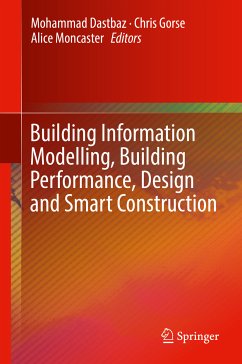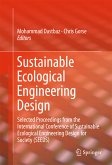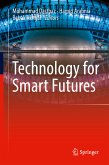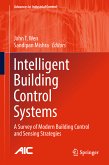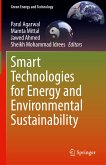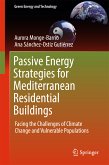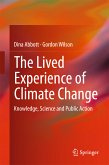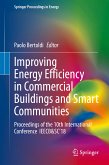Building Information Modelling, Building Performance, Design and Smart Construction (eBook, PDF)
Redaktion: Dastbaz, Mohammad; Moncaster, Alice; Gorse, Chris
121,95 €
121,95 €
inkl. MwSt.
Sofort per Download lieferbar

61 °P sammeln
121,95 €
Als Download kaufen

121,95 €
inkl. MwSt.
Sofort per Download lieferbar

61 °P sammeln
Jetzt verschenken
Alle Infos zum eBook verschenken
121,95 €
inkl. MwSt.
Sofort per Download lieferbar
Alle Infos zum eBook verschenken

61 °P sammeln
Building Information Modelling, Building Performance, Design and Smart Construction (eBook, PDF)
Redaktion: Dastbaz, Mohammad; Moncaster, Alice; Gorse, Chris
- Format: PDF
- Merkliste
- Auf die Merkliste
- Bewerten Bewerten
- Teilen
- Produkt teilen
- Produkterinnerung
- Produkterinnerung

Bitte loggen Sie sich zunächst in Ihr Kundenkonto ein oder registrieren Sie sich bei
bücher.de, um das eBook-Abo tolino select nutzen zu können.
Hier können Sie sich einloggen
Hier können Sie sich einloggen
Sie sind bereits eingeloggt. Klicken Sie auf 2. tolino select Abo, um fortzufahren.

Bitte loggen Sie sich zunächst in Ihr Kundenkonto ein oder registrieren Sie sich bei bücher.de, um das eBook-Abo tolino select nutzen zu können.
This book charts the path toward high performance sustainable buildings and the smart dwellings of the future. The volume clearly explains the principles and practices of high performance design, the uses of building information modelling (BIM), and the materials and methods of smart construction. Power Systems, Architecture, Material Science, Civil Engineering and Information Systems are all given consideration, as interdisciplinary endeavours are at the heart of this green building revolution.
- Geräte: PC
- ohne Kopierschutz
- eBook Hilfe
- Größe: 11.28MB
Andere Kunden interessierten sich auch für
![Sustainable Ecological Engineering Design (eBook, PDF) Sustainable Ecological Engineering Design (eBook, PDF)]() Sustainable Ecological Engineering Design (eBook, PDF)193,95 €
Sustainable Ecological Engineering Design (eBook, PDF)193,95 €![Technology for Smart Futures (eBook, PDF) Technology for Smart Futures (eBook, PDF)]() Technology for Smart Futures (eBook, PDF)89,95 €
Technology for Smart Futures (eBook, PDF)89,95 €![Intelligent Building Control Systems (eBook, PDF) Intelligent Building Control Systems (eBook, PDF)]() Intelligent Building Control Systems (eBook, PDF)89,95 €
Intelligent Building Control Systems (eBook, PDF)89,95 €![Smart Technologies for Energy and Environmental Sustainability (eBook, PDF) Smart Technologies for Energy and Environmental Sustainability (eBook, PDF)]() Smart Technologies for Energy and Environmental Sustainability (eBook, PDF)129,95 €
Smart Technologies for Energy and Environmental Sustainability (eBook, PDF)129,95 €![Passive Energy Strategies for Mediterranean Residential Buildings (eBook, PDF) Passive Energy Strategies for Mediterranean Residential Buildings (eBook, PDF)]() Aurora Monge-BarrioPassive Energy Strategies for Mediterranean Residential Buildings (eBook, PDF)73,95 €
Aurora Monge-BarrioPassive Energy Strategies for Mediterranean Residential Buildings (eBook, PDF)73,95 €![The Lived Experience of Climate Change (eBook, PDF) The Lived Experience of Climate Change (eBook, PDF)]() Dina AbbottThe Lived Experience of Climate Change (eBook, PDF)73,95 €
Dina AbbottThe Lived Experience of Climate Change (eBook, PDF)73,95 €![Improving Energy Efficiency in Commercial Buildings and Smart Communities (eBook, PDF) Improving Energy Efficiency in Commercial Buildings and Smart Communities (eBook, PDF)]() Improving Energy Efficiency in Commercial Buildings and Smart Communities (eBook, PDF)129,95 €
Improving Energy Efficiency in Commercial Buildings and Smart Communities (eBook, PDF)129,95 €-
-
-
This book charts the path toward high performance sustainable buildings and the smart dwellings of the future. The volume clearly explains the principles and practices of high performance design, the uses of building information modelling (BIM), and the materials and methods of smart construction. Power Systems, Architecture, Material Science, Civil Engineering and Information Systems are all given consideration, as interdisciplinary endeavours are at the heart of this green building revolution.
Hinweis: Dieser Artikel kann nur an eine deutsche Lieferadresse ausgeliefert werden.
Dieser Download kann aus rechtlichen Gründen nur mit Rechnungsadresse in A, B, BG, CY, CZ, D, DK, EW, E, FIN, F, GR, HR, H, IRL, I, LT, L, LR, M, NL, PL, P, R, S, SLO, SK ausgeliefert werden.
Hinweis: Dieser Artikel kann nur an eine deutsche Lieferadresse ausgeliefert werden.
Produktdetails
- Produktdetails
- Verlag: Springer International Publishing
- Seitenzahl: 326
- Erscheinungstermin: 31. März 2017
- Englisch
- ISBN-13: 9783319503462
- Artikelnr.: 53037029
- Verlag: Springer International Publishing
- Seitenzahl: 326
- Erscheinungstermin: 31. März 2017
- Englisch
- ISBN-13: 9783319503462
- Artikelnr.: 53037029
- Herstellerkennzeichnung Die Herstellerinformationen sind derzeit nicht verfügbar.
Prof. Mohammad Dastbaz is the Deputy Vice Chancellor at University of Suffolk. Professor Dastbaz's research work over recent years has been focused on the use and impact of emerging technologies in society, particularly learning, training and the development of "eGovernment." Dr. Dastbaz has led EU and UK based funded research projects and has been the Symposium Chair of Multimedia Systems in IEEE's Information Visualisation (IV) conference since 2002. He has over 50 refereed publications, including numerous journal paper articles, conference papers, book chapters and books on e-learning, eGovernment and the design and development of Multimedia Systems. Professor Dastbaz is a Fellow of the British Computer Society and UK's Higher Education Academy as well as the professional member of ACM and IEEE's computer society.
Part I. Concepts in Sustainability.- Chapter 1.The Problem is also the Solution: The Sustainability Paradox.- Chapter 2.Appreciating the Wicked Problem: A Systems Approach to Sustainable Cities.- Chapter 3.Circular Economy Research in the Built Environment: A Theoretical Contribution.- Part II. Building Information Modelling.- Chapter 4.- 1.Building Information Modelling: A Paradigm Shift in Construction - Farzad Khosrowshahi Iterative design using agile project management and BIM to improve building performance.- Chapter 5.Use of simulation through BIM-enabled Virtual Projects to enhance learning and soft employability skills in Architectural Technology education.- Chapter 6. Development of a Building Information Modelling (BIM) based real-time data integration system using a Building Management System (BMS).- Chapter 7.Procurement route and Building Information Modelling (BIM) implementation effect on sustainable Higher Education Refurbishment' projects.- Part III. Building Performance and Design.- Chapter 8.A novel transient experimental method for in situ measurements of the thermal performance of building fabrics.- Chapter 9.Energy Performance Analysis of Residential Buildings in Saudi Arabia (Multi Case Study).- Chapter 10.Fossil fuel reliant housing in Nigeria: physio-climatic regionalism as an energy/cost efficient perspective to providing thermal comfort.- Chapter 11.Predicting future overheating in a Passivhaus dwelling using calibrated dynamic thermal simulation models.- Chapter 12.Benefits and challenges of visualising embodied and whole life carbon of buildings.- Chapter 13.Models for Sustainable Electricity Provision in Rural Areas Using Renewable Energy Technologies - Nigeria Case Study.- Chapter 14.Energy Mapping Using Publicly Available Data for Urban Energy Retrofit.- Part IV.Smart Construction.- Chapter 15.-Things change: exploring transformational experiences within the UK construction industry.- Chapter 16.In-Situ Thermal Transmittance ofCase Studies In Dublin.- Chapter 17.It's House-Building but not as We Know It: The Impact Of Neighbourhood Planning On Development In England.- Chapter 18.Integrated Façade System for office buildings in hot and arid climates: A comparative analysis.- Chapter 19.Decarbonising construction using renewable photosynthetic materials.- Chapter 20.The replacement of wood or concrete in construction projects - an industrial case study demonstrating the benefits of intrusion moulded mixed waste plastic.
Part I. Concepts in Sustainability.- Chapter 1.The Problem is also the Solution: The Sustainability Paradox.- Chapter 2.Appreciating the Wicked Problem: A Systems Approach to Sustainable Cities.- Chapter 3.Circular Economy Research in the Built Environment: A Theoretical Contribution.- Part II. Building Information Modelling.- Chapter 4.- 1.Building Information Modelling: A Paradigm Shift in Construction - Farzad Khosrowshahi Iterative design using agile project management and BIM to improve building performance.- Chapter 5.Use of simulation through BIM-enabled Virtual Projects to enhance learning and soft employability skills in Architectural Technology education.- Chapter 6. Development of a Building Information Modelling (BIM) based real-time data integration system using a Building Management System (BMS).- Chapter 7.Procurement route and Building Information Modelling (BIM) implementation effect on sustainable Higher Education Refurbishment' projects.- Part III. Building Performance and Design.- Chapter 8.A novel transient experimental method for in situ measurements of the thermal performance of building fabrics.- Chapter 9.Energy Performance Analysis of Residential Buildings in Saudi Arabia (Multi Case Study).- Chapter 10.Fossil fuel reliant housing in Nigeria: physio-climatic regionalism as an energy/cost efficient perspective to providing thermal comfort.- Chapter 11.Predicting future overheating in a Passivhaus dwelling using calibrated dynamic thermal simulation models.- Chapter 12.Benefits and challenges of visualising embodied and whole life carbon of buildings.- Chapter 13.Models for Sustainable Electricity Provision in Rural Areas Using Renewable Energy Technologies - Nigeria Case Study.- Chapter 14.Energy Mapping Using Publicly Available Data for Urban Energy Retrofit.- Part IV.Smart Construction.- Chapter 15.-Things change: exploring transformational experiences within the UK construction industry.- Chapter 16.In-Situ Thermal Transmittance ofCase Studies In Dublin.- Chapter 17.It's House-Building but not as We Know It: The Impact Of Neighbourhood Planning On Development In England.- Chapter 18.Integrated Façade System for office buildings in hot and arid climates: A comparative analysis.- Chapter 19.Decarbonising construction using renewable photosynthetic materials.- Chapter 20.The replacement of wood or concrete in construction projects - an industrial case study demonstrating the benefits of intrusion moulded mixed waste plastic.
